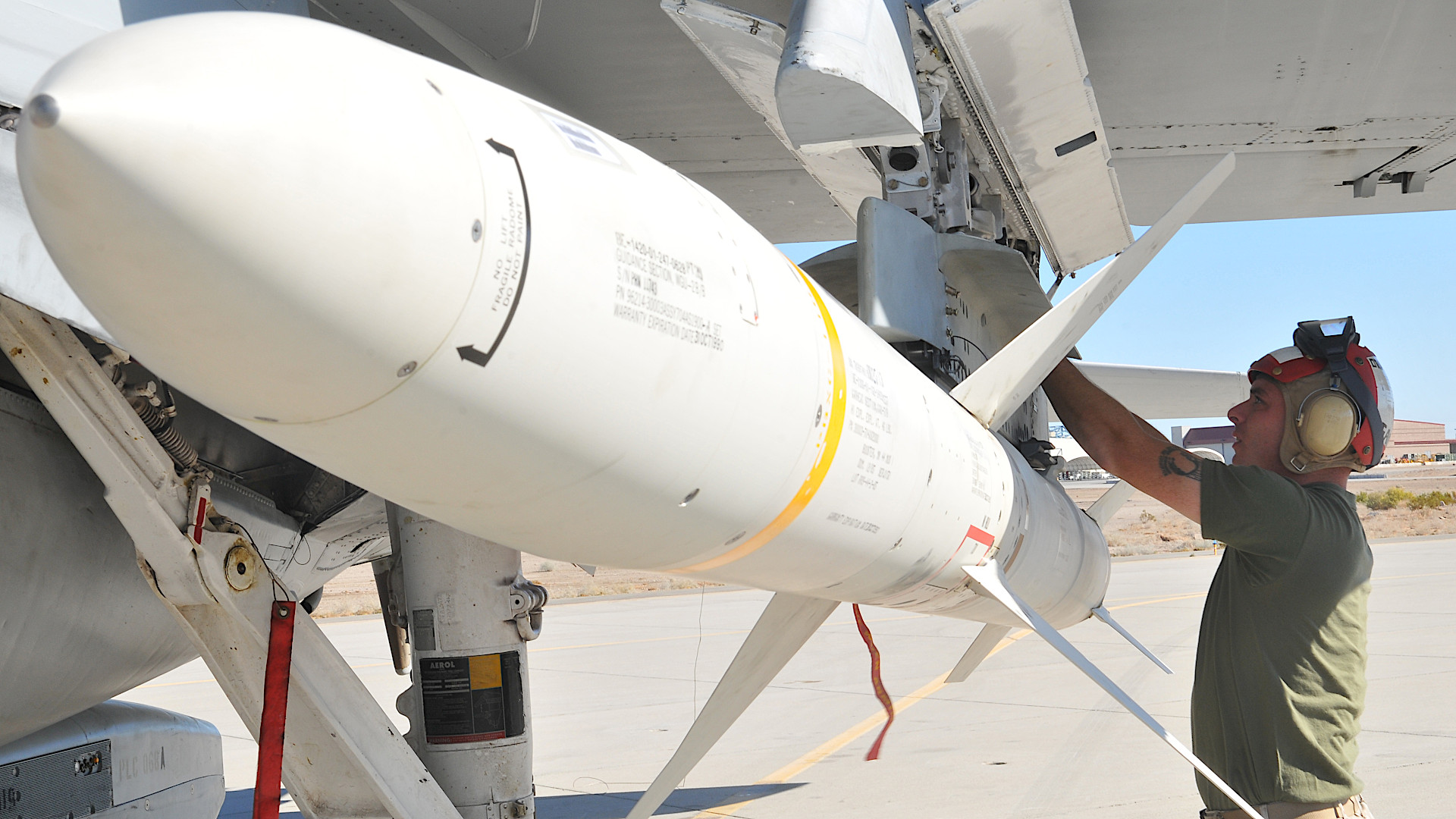The U.S. Navy is set to acquire dozens of new high-speed aerial targets converted from old AGM-88 High-Speed Anti-Radiation Missiles, or HARMs, a family of weapons that has recently grabbed headlines due to their use in Ukraine. The service says that the resulting AQM-88As will help it meet its needs for fast-flying aerial targets to support various training, research and development, and test evaluation activities following the launch of its last two AQM-37 Typhon target drones earlier this year.
The War Zone first became aware of the AQM-88A last month in a response from Naval Air Systems Command (NAVAIR) to questions about the end of the AQM-37’s service career. You can read more about the Typhon, also referred to by the nickname Jayhawk, and its six-decade-long career with the U.S. military here.
NAVAIR subsequently provided additional information about the AQM-88A, also called the Supersonic Air-Launched Target (SALT), as well as its design and the Navy’s plans for acquiring approximately 50 over the next three years. The Navy did not have a releasable picture to share of the SALT, but said the design is externally identical to the AGM-88B, the second main variant in the HARM family, from which they are converted.
The development of the original AGM-88A traces all the way back to the late 1960s, and the desire for an improved anti-radiation missile to replace the AGM-45 Shrike and AGM-78 Standard Anti-Radiation Missile (ARM). Anti-radiation missiles, in general, are designed to home in on hostile radiofrequency emissions, primarily those put out by enemy radars, and destroy or otherwise neutralize them.

As the HARM name implies, the AGM-88A was designed, among other things, to be significantly faster than the AGM-45 and AGM-78. This by itself gave enemy radar operators less time to shut their systems off, which had proven in North Vietnam, among other places, to be a very viable tactic for evading or otherwise confusing the Shrike and Standard ARM.
Difficulties in development meant that the AGM-88A did not enter service with the Navy until 1985. This was followed by the introduction of a Block II subvariant the following year with an improved reprogrammable seeker. The AGM-88B followed in 1987, with a further improved seeker that was itself eventually upgraded with new software to create a Block III subvariant.

Additional variants of the HARM have since been developed and fielded with further improved capabilities, which you can read more about here. Many of these “new” versions have actually been produced through the conversion of older types, including AGM-88Bs. The most advanced version currently in service is the AGM-88E Advanced Anti-Radiation Guided Missile (AARGM), which adds an active millimeter-wave radar seeker. The weapon’s multi-mode guidance package helps improve its ability to find and hit the target, even if the emitter shut down or, in the case of mobile systems, makes an attempt to dash for cover.
The Navy is also now leading the development of a new AGM-88 derivative, the AGM-88G Advanced Anti-Radiation Guided Missile-Extended Range (AARGM-ER), which has more substantial differences from previous variants, including a completely new external shape. The AARGM-ER does still use the same guidance and control systems as the AARGM, as you can learn more about here.
American forces and others have employed variants of the HARM in multiple conflicts since the 1980s. However, these missiles have received a significant amount of public attention just this year after the U.S. government helped the Ukrainian Air Force integrate older versions onto at least some of its Soviet-era MiG-29 Fulcrum fighter jets, as well as possibly a portion of its fleet of Su-27 Flankers.
When it comes to the AQM-88A, the conversion process will entail replacing the AGM-88B’s live warhead with “an inert warhead and the HARM control section undergoes modifications to convert it to the SALT control section,” a NAVAIR spokesperson explained to The War Zone. “The HARM rocket motor and guidance section remain unchanged.”

The HARM-based AQM-88A with its new SALT-specific control section should offer the flexibility to replicate multiple kinds of aerial threats, including certain types of air-to-air or air-to-surface missiles. Converting AGM-88B could well represent a lower-cost option to buying brand-new purpose-built aerial targets with similar capabilities, as well.
At the same time, the Navy is well aware that the AQM-88A alone will not be able to replicate as diverse a range of threats as the AQM-37, which by itself could act as a surrogate for air-to-air missiles, low-flying cruise missiles, and even some lower-end ballistic missiles. The service says that GQM-163A Coyotes, also known as Supersonic Sea Skimming Targets (SSST), will also supplant the Typhon in various roles.

The GQM-163A is ground-launched and was originally developed to mimic sea-skimming anti-ship cruise missiles, but its capabilities have since expanded, including with the addition of a “high-dive” mode that can be used to replicate certain ballistic threats.

“While the remaining U.S. Navy supersonic targets, [the] GQM-163A Supersonic Sea Skimming Target and AQM-88A Supersonic Air-Launched Target (SALT), do not replicate the same performance as the AQM-37, they are [each] capable of fulfilling a separate limited subset of its capability,” NAVAIR told The War Zone. “Between both the GQM-163 and SALT, there currently is not an anticipated gap in fleet training.”
It’s unclear how many AQM-88As may exist now. A prototype was successfully demonstrated in December 2020, according to NAVAIR. Currently, the Navy plans to acquire 50 of these aerial targets in total between Fiscal Year 2023, which started on October 1 of this year, and Fiscal Year 2025 to meet those requirements.
What we do know is that the Navy is set to give dozens of older HARMs a new life as aerial targets in the coming years.
Contact the author: joe@thedrive.com
